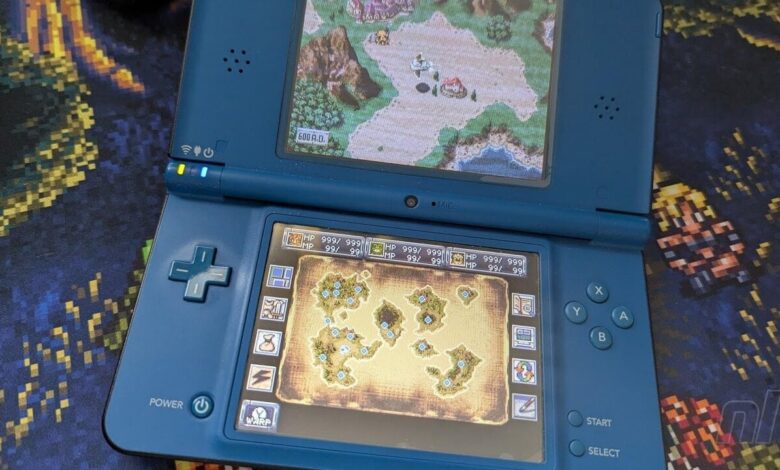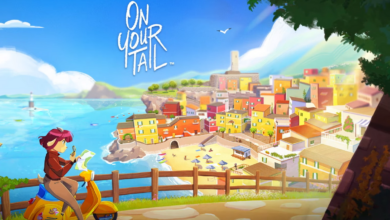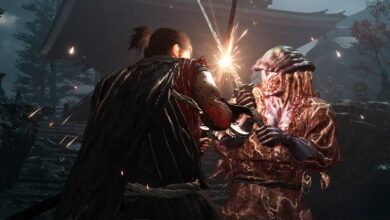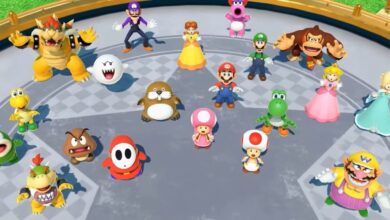Why I love a good map and that time I made Yoshi’s melon map for Nintendo Power


During the holiday season, we’ll be republishing some of the best articles from Nintendo Life writers and contributors as part of our campaign. Best of 2024 series. This article was originally published in July. Enjoy!
Soapbox features allow our individual writers and contributors to voice their opinions on hot topics and random things they’re mulling over. Today, Nathan will map the pixels…
What is your pet video game? Is it something that when present will ruin your experience, no matter how good the game is? To me, it’s a bad in-game map.

Get the original MetroidsFor example. I don’t like that game. Never have. And it wasn’t that I first played it decades after its initial release. No, I was there in 1986 and still have the original. I was impressed by its gameplay and theme (four-way scrolling!?) but I couldn’t understand its maze design for one simple reason: it had no map.
I’ve always loved maps. And not just in the virtual world. In college I studied Geography. My goal is to become a GIS (Geographic Information System) expert – a map maker.
Even now, maps – real and video games – still play a prominent role in my daily life. Map posters are plastered on the walls of my home office and game room, and the background on my work computer cycles through images from VGMaps. It’s fun to see my co-workers’ faces light up when they recognize the map while I share my screen in a Teams meeting. That’s the power of a useful and recognizable map. It takes you to a place you have already visited.
What is a map? A bunch of miserable little secrets?
At the risk of being pedantic, what exactly is a map?
It is a representation of a world. A rendering. It can be plain text (like from a dungeon master), a 2D image (an overhead view), or a 3D model (like the globe at grandma’s house). Regardless of its format, a map is only useful if it provides value to the reader. It must convey information and, above all, be accurate. As they say, The map must match the terrain.
Yoshi’s horror story
I learned this lesson while working for Nintendo Power magazine in the late 90s. One of my main duties was to ensure that the printed maps were accurate, with particular emphasis on placing captions for items and power-ups.

The most difficult task I was assigned was to guide Yoshi’s Story players. For those who haven’t played yet Yoshi’s story is a 2.5D platform game where the goal of each level is not to find the exit but to find and eat 30 types of fruit. The game has 24 levels and in each level there are 60 types of fruit, a total of 1,440 types of fruit. Remember that number.
During the production of the guide, Nintendo’s Japanese headquarters often sent out new builds of games that were still in development. Occasionally there are buildings that have drastic changes, but often the only changes are a few pieces of fruit that have been moved in a level. Of course, I was never told what to look for. Instead, I had to play the entire game and confirm or correct the location of each of those fourteen hundred and forty melons, watermelons, apples, bananas, and grapes.
Two months of finding solid results helped me escape the desire to pursue a career in cartography. However, Yoshi’s work taught me a deep appreciation for the value of a well-made map.
Metroid: A quick case study
Going back to Metroid, navigating the planet Zebes definitely requires a map.
In fact, the entire Metroid series is exemplary of the utility of in-game maps. The first Metroid (and to a lesser extent its sequels) are hailed as pioneers of their genre, but their lack of maps is perhaps their most common criticism. The third entry in the franchise, Super Metroidit’s completely the opposite. Its in-game maps certainly set the standard for the genre and perhaps the entire medium.

Beyond simple existence (which is awesome), Super Metroid’s pause screen map also offers layers of value:
- It conveys progression by filling in as you explore
- It encourages exploration by only filling in the grids you’ve actually touched, rather than filling in the rooms you’ve visited (looking at you). Hollow Knight)
- It rewards exploration and discovery by skipping hidden areas, even if you choose to visit optional Map Rooms and
- It assists you, the player, in identifying areas for further exploration
With just one grid, two colors, and a handful of icons, Super Metroid’s maps offer one of the game’s most important features.
A few more examples
If we can venture beyond Samus’s orbit, here are some other game maps I found interesting.
Hub World Map

The first game I remember that had an interactive overworld was biological commandos for NES. Underworld in Super Mario Bros. 3 perhaps better known, but Super Joe’s game came to the West two years earlier.
The hub world of Bionic Commando allows players to see and explore (by flying an incredible helicopter!) branching paths between levels and optional areas. The map displays the interconnectedness of the game world, while also providing interactivity not previously seen in game maps.
In-game, in-game maps
Is there anything more definitively ‘video game’ than the pause button? They say “Time stops for no one”, so you know you are in a virtual world where you can literally stop time with just the press of a button.
Yoshi’s work taught me a deep appreciation for the value of a well-made map.
Most of the maps in the game are only accessible from the Pause screen, which means you can’t view the map or explore the world. You cannot do both. Final Fantasy VI (also known as Final Fantasy 3 in the West) broke that model by allowing you to display a world map as an overlay. This shocked me at the time. I can explore the whole world And map – at once! In fact, I can navigate the world just by looking at that little map. Please don’t do it while driving, but I highly recommend doing it while hot air ballooning to Narshe.

And yes, Far Cry 2 And Minecraft took this concept further by displaying your in-game avatar on the map. That’s total map immersion for you.
The perfect use of dual screens
Time trigger first appeared in 1995 on SNES, but DS port for me is the definitive version. And not just because of the added content and FMV scenes. No, it’s because your map is always present on the second screen. It’s the map in the game, brought to its logical conclusion on the perfect map lover’s console. Axiom Verge on Wii U is another example of a game whose best version is stuck on an old dual-screen platform.

Reference points and symbols
Let’s look at one more. Like Super Metroid, the map is clear The Legend of Zelda: Breath of the Wild arguably the game’s biggest feature.
Not only does it incorporate every element mentioned so far (tracking progress, encouraging exploration, communicating the rules of the game world, and constant availability) but it also enhances interactivity amazing. You can mark the map with waypoints, using symbols or colors to convey personalized meaning. Furthermore, the line between the map and the game world is blurred by allowing Link to simply look at a point on the ground and drop a pin. Hyrule isn’t just represented by a map; it is a map.
From Metroid to Breath of the Wild and beyond, I continue to be fascinated by video game maps. They shape our journeys of discovery and convey thousands of words in just one picture, especially when we are allowed to paint on canvas ourselves.

Smithsonian curator Lucy Fellowes once said: “Every map is someone’s way of making you see the world their way.” I’m no cartographer – Yoshi’s Story proves that – but I hope I’ve painted a picture of how I see the world – as a bunch of little pixelated secrets.
What do you look for in an in-game map? Do you have a favorite? Let us know in the comments.




